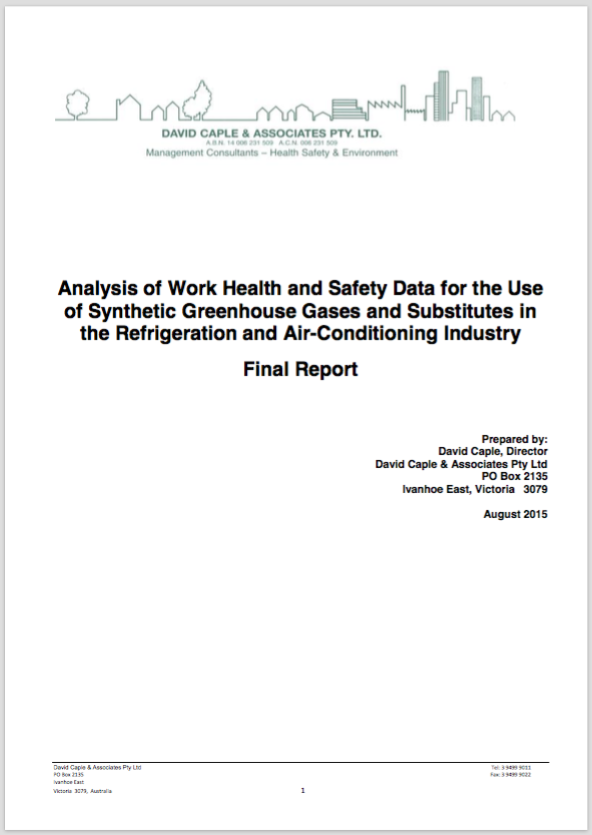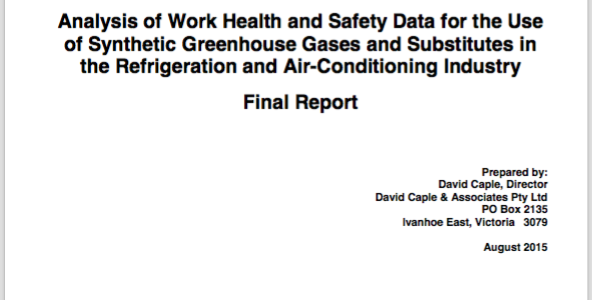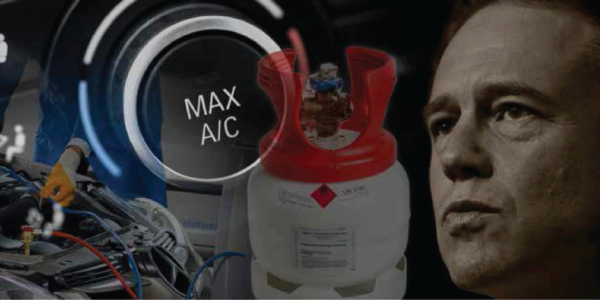Recommendations of David Caple report find their way into the Ozone Review technical analysis
- PostedPublished 18 December 2015
VASA was among the 13 industry organisations David Caple & Associates consulted with, in addition to 22 regulators, eight training organisations, 17 suppliers and service providers, one trade union, one insurance group and seven overseas advisors.

Conclusions of the report are not as definitive as VASA or many others in the industry would have hoped, but the document provides a useful first step in highlighting that the status quo of doing little to nothing about regulating hydrocarbons and other alternative refrigerants that come with additional safety concerns about flammability, toxicity and high operating pressures is unsustainable.
The report notes the current low take-up of refrigerant identification equipment and that regulating only the emissions of ozone-depleting and synthetic greenhouse gases has led to a lack of national governance for alternative refrigerants and their related safety concerns.
It also identifies safety incidents involving hydrocarbon refrigerants but says these risks have not been “identified as a priority area by the WHS regulators, or the gas or electrical regulators in Australia”.
The Technical Analysis Report, a supporting document to the Ozone Review options paper, addresses safety issues facing the RAC industry and how these relate to the remit of the ARCtick licensing scheme. Using a combination of the findings from the David Caple report and industry submissions to the Ozone review’s terms of reference, the technical analysis raises a number of points, a selection of which are listed below:
- Although there have been few notifiable safety incidents in Australia, and the RAC industry has a low rate of workers’ compensation claims, there remains a growing risk of incidents occurring with the uptake of lower global warming potential (GWP) refrigerants.
- Most technicians continue to use industry standard refrigerants as recommended by equipment manufacturers but have safety concerns about unknown and unlabelled refrigerant cocktails being introduced to systems without adequate risk assessments or engineering modifications.
- Similarly to Europe, Japan and the United States, in Australia equipment manufacturers place tight controls on refrigerant choice in equipment under warranty, however under Australian Consumer Law there are limited circumstances for a manufacturer to void a warranty because a piece of equipment was modified to accept a different refrigerant.
- Unlike Europe and Japan, where technicians largely stick to manufacturer-recommended refrigerants, Australia is culturally similar to the US in that people are more likely to use cheaper alternatives to the gases recommended by the manufacturer for equipment outside of the warranty period.
- Technicians and consumers must be made aware of the risks associated with lower GWP refrigerants and how to use them safely.
- Some industry groups have strong concerns about assuring the safety of both technicians and consumers where flammable refrigerants are retrofitted into systems designed for ozone-depleting and synthetic greenhouse gases.
- In response to safety concerns, there is broad industry support for including alternative gases in the ARCtick licensing scheme and a desire for a level playing field across the industry regardless of refrigerant choice.
- The move to lower GWP refrigerants is driving changes to equipment designs such as leak mitigation and the removal of ignition sources for safety reasons, but these safeguards are not necessarily being applied to existing equipment that has been retrofitted with alternative refrigerants.
- Refrigerant contamination caused by the topping up of systems with alternative refrigerants poses a risk to technicians, their colleagues, consumers and the recipients of reclaimed gas. Making this worse is the low (five per cent) uptake of refrigerant identification equipment in the field, making it difficult for technicians to make informed safety decisions about how to work on the equipment and recover the refrigerant.
- Ozone regulations and Codes of Practice set out the safety and environmental practices required of technicians, but these cannot be enforced on unlicensed technicians using alternative refrigerants. The only hard and fast rules are that ODS or SGG refrigerant must first be recovered by a licensed person and that the system is clearly and accurately labelled.
- CategoriesIn SightGlass
- TagsHFC phase down, Ozone Act review, SightGlass News Issue 4



